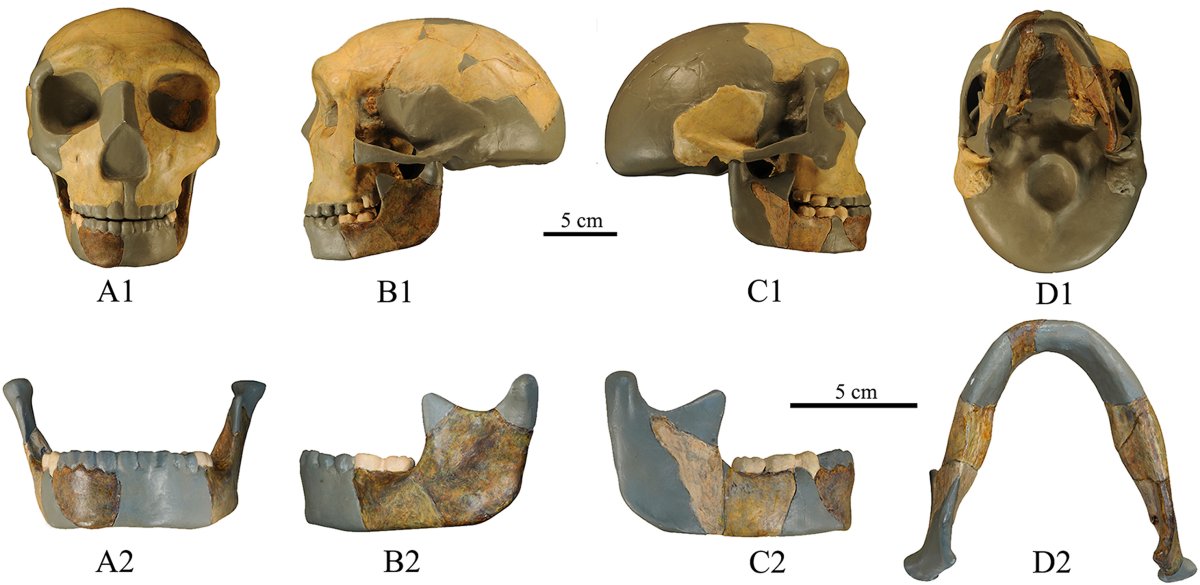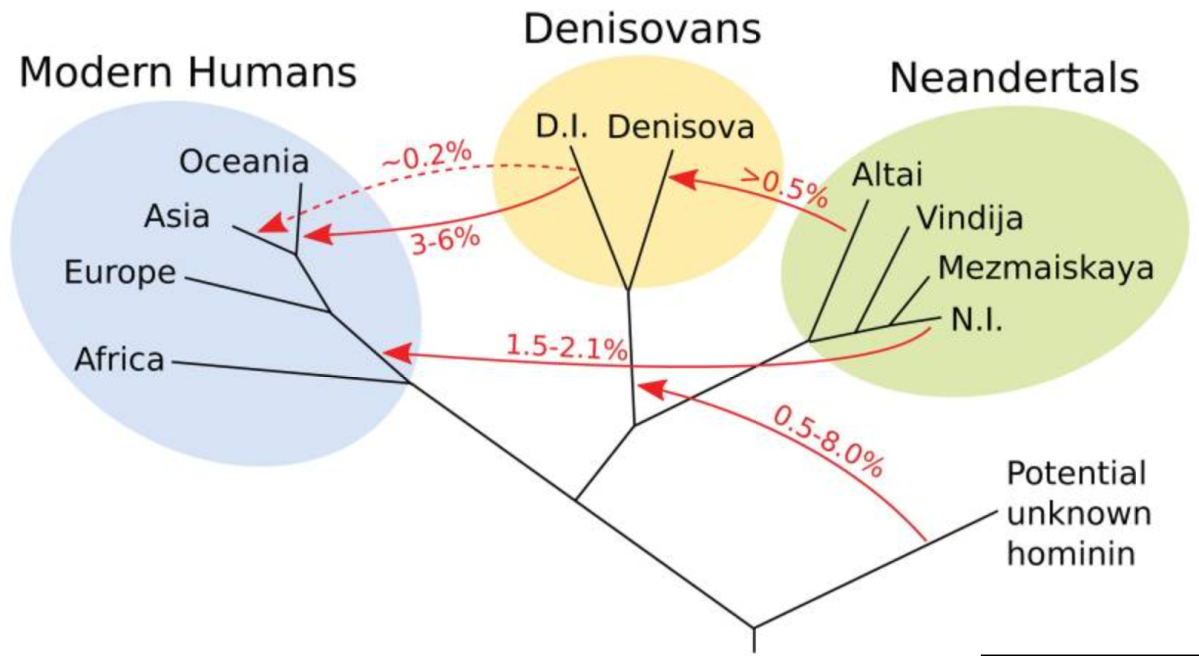An international team of researchers has unearthed an early human skull unlike any other in the fossil record — and their analysis suggests we may have to add another branch to the evolutionary tree.

The ancient skull, which consists of a nearly complete jaw and partial cranium, was found in Hualongdong, a region in east China near the Yangtze River. It dates back 300,000 years, which also happens to be the age of the oldest-known skull of a modern human, or homo sapiens.
But this skull does not belong to the homo sapiens species. It shares a striking resemblance to modern humans in some aspects, including a flat face, but lacks what researchers call a “true chin,” suggesting that the skull could be from an earlier human species such as homo erectus.
The scientists write that the face of the skull “seems to exhibit more derived modern human-like features,” while the jaw and top of the head “seem to reflect more primitive traits.”
Upon further analysis, the researchers found that the skull exhibits a “mosaic” of features found in homo sapiens, homo erectus and the Denisovans, another early human species that is evolutionarily close to Neanderthals.
After trying to definitively classify the bones under one of these known species, the researchers have been left wondering if the Hualongdong skull, abbreviated as HLD 6, could potentially represent a new species of early human, a missing link in the evolutionary chain.
The study, which was published last week in the Journal of Human Evolution, notes that other mysterious and hard-to-classify early human fossils have been discovered in China in recent years.
Such discoveries are often explained away as transitionary humans on the evolutionary path to known species (for example, the 200,000-year-old “Dali Man” found in China is thought to be either a primitive form of homo sapiens or an advanced example of homo erectus). But this growing body of enigmatic bones is lending credence to the idea that our family tree is incomplete.
For instance, a skull found in Harbin, in northern China, is also thought to represent a new species of human. A 2018 study dubbed it homo longi, though the skull has been nicknamed “Dragon Man.” This new species is a controversial topic, however, and not all scientists agree that homo longi existed.
Comparative analyses of the Harbin skull, Dali Man and the HLD 6 skull have led researchers to believe that these fossils “could potentially cluster” and “would represent a new sister lineage for (homo sapiens).”
And it’s not just fossil comparisons that back up this theory, but genetic testing as well.
A 2014 study in Nature that sequenced the genome of a Neanderthal woman from Siberia found the presence of genes from a variety of different early human species, suggesting that early humans were interbreeding with other groups. But during the genetic sequencing, scientists found the presence of DNA from an unknown ancestor.
Because the HLD 6 skull is believed to be from an early human that died at about 12 to 13 years of age, researchers thought that its anomalous features could be because of its young age — but even compared with juvenile specimens of other human species, the team still found that HLD 6 was distinct.
Could this really mean that a new human ancestor has been discovered? The scientists say more research is needed before anything can be conclusively determined.









Comments